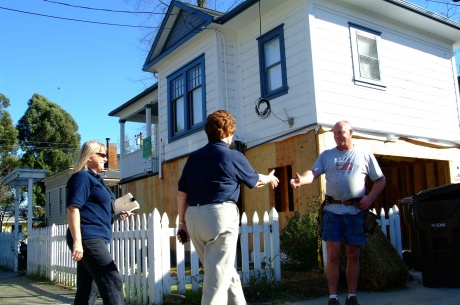 Effective mitigation requires that we all understand local risks, address the hard choices, and invest in long-term [community] well-being.
Effective mitigation requires that we all understand local risks, address the hard choices, and invest in long-term [community] well-being.
By incorporating the latest advancements in building design and technology – and by applying lessons learned from prior disasters – we can create safer, stronger, more resilient communities. Professionals in a variety of disciplines provide the expertise to make communities safer. Engineers, architects, hydrologists, geologists, urban planners, digital cartographers, and others all play vital roles.
 Their work provides the evidence-based knowledge needed to understand risk and take action to reduce it, including: properly elevating homes in flood prone regions; strengthening buildings in hurricane zones; retrofitting structures for improved earthquake resistance; providing funds to manage wildfire risk; and making building codes for new construction more vigorous.
Their work provides the evidence-based knowledge needed to understand risk and take action to reduce it, including: properly elevating homes in flood prone regions; strengthening buildings in hurricane zones; retrofitting structures for improved earthquake resistance; providing funds to manage wildfire risk; and making building codes for new construction more vigorous.
Creating resilient communities – that are able to not only survive hazards, but come through them safely, quickly, and securely – requires investment. Building safe rooms, making seismic retrofits for earthquake resistance, constructing floodwalls, and planning other structures to protect lives is important work. But investment in mitigation is not just a focus on bricks and mortar. It’s also: investing in technology and analyzing risks; applying proven principles of floodplain management; creating stronger building codes and guiding smarter development; building strong relationships with communities; and much more. Mitigation investment is, ultimately, a commitment to devote human and financial capital to strengthen a community – and prevent hazards from becoming disasters.
- FEMA works with communities to shape hazard mitigation plans that will support long-term decision making and resilience.
- Communities, in turn, adopt and enforce local building codes, floodplain ordinances and actively encourage their residents to be more resilient to disasters.
- FEMA provides technical guidance and expertise to support smart, safe building practices in earthquake-, high-wind-, and flood-prone areas.
- NFIP communities must adopt and enforce ordinances that meet or exceed FEMA requirements to reduce the risk of flooding.
- FEMA also works with communities to regularly update flood hazard maps to reflect local changes impacting the likelihood of flooding and to put the best in new technology to work.

